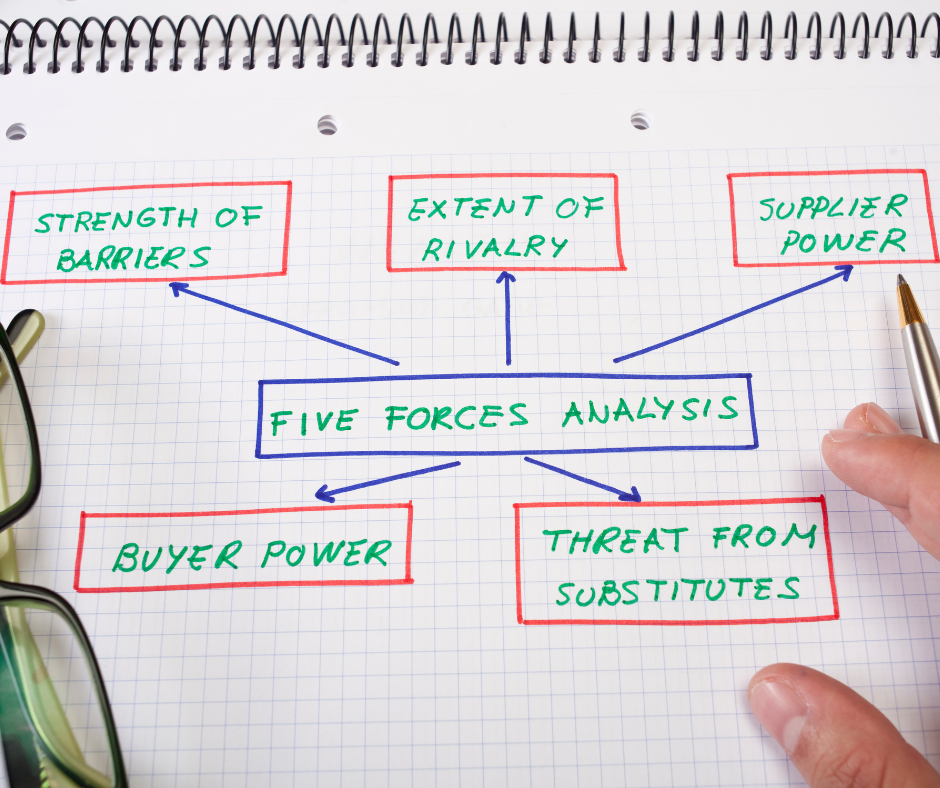Monopolistic competition is a market structure characterized by a large number of firms that sell similar but not identical products. In this type of market, each firm has some degree of market power, meaning they can influence the price of their product by adjusting the quantity they supply. However, because there are many firms selling slightly different products, none of them has complete control over the market.
In a monopolistically competitive market, firms often engage in product differentiation, which means they try to make their product stand out from competitors by offering unique features or benefits. This can include things like branding, packaging, and marketing. Product differentiation helps firms create a loyal customer base, and it can also allow them to charge a higher price than their competitors.
Monopolistic competition is often found in industries such as restaurants, clothing, and personal care products. The market structure can lead to both benefits and drawbacks for consumers, as they have access to a wide variety of products but may also pay a higher price due to the differentiation strategies employed by firms.
In this article, we will dwell more into understanding monopolistic competition:
- Understanding Monopolistic Competition
- Characteristics of Monopolistic Competition
- Advantages of Monopolistic Competition
- Disadvantages of Monopolistic Competition
- What Is the Difference Between Monopolistic Competition and Perfect Competition?
- What Industry Is an Example of Monopolistic Competition?
- What Is the Difference Between Monopolistic Competition and a Monopoly?
- How can Deskera Help You?
- Key Takeaways
Understanding Monopolistic Competition
Monopolistic competition is a market structure that falls somewhere between perfect competition and monopoly. As explained, in this type of market, there are many firms selling similar, but not identical products, and there are low barriers to entry and exit.
One defining feature of monopolistic competition is product differentiation, which means that each firm's product has unique features that differentiate it from competitors. This differentiation can come from differences in quality, design, or marketing.
Because there are many firms in the market, each firm has a limited degree of market power, meaning they have some control over the price of their product but are still subject to market forces. This creates a situation where firms can charge slightly higher prices than in a perfectly competitive market, but they cannot charge significantly more without losing customers to competitors.
In the long run, firms in monopolistic competition will earn normal profits, meaning they will make enough to cover their costs, but not enough to earn an economic profit. This is because new firms will enter the market to take advantage of any profit opportunities, increasing competition and driving down prices.
Monopolistic competition is a common market structure for many industries, such as restaurants, clothing, and personal care products.
Characteristics of Monopolistic Competition
The key characteristics of monopolistic competition are:
- Large Number of Firms: There are many firms in the market, each with a small market share. This means that no single firm has a dominant position in the market.
- Differentiated Products: Each firm produces a slightly different product than its competitors, which makes its product unique in some way. Product differentiation can be based on quality, design, features, branding, or other factors.
- Low Barriers to Entry and Exit: New firms can easily enter the market, and existing firms can exit the market if they are not profitable. There are no significant barriers to entry such as patents or high capital requirements.
- Non-Price Competition: Firms compete on factors other than price, such as product quality, advertising, and customer service. This type of competition is also known as "monopolistic competition."
- Limited Market Power: Each firm has some degree of market power, but it is limited due to the presence of close substitutes produced by competitors. This means that firms can increase their price slightly without losing all their customers, but they cannot raise their price significantly.
- Demand Curve is Downward Sloping: The demand curve for each firm is downward sloping because consumers are willing to pay less for a product as more substitutes become available.
- Normal Profit in the Long Run: In the long run, firms in monopolistic competition will earn normal profit, which means they earn enough revenue to cover their costs, but not enough to earn an economic profit. This is because new firms can enter the market and compete away any profit opportunities.
Monopolistic competition is a market structure that combines elements of both competition and monopoly. It is common in industries such as restaurants, clothing, and personal care products.
Advantages of Monopolistic Competition
The advantages of monopolistic competition include:
- Product differentiation: In monopolistic competition, firms can differentiate their products, which means they can offer unique products to consumers that may not be available in a perfectly competitive market. This allows consumers to have more options and choices and can lead to a better fit between the product and consumer preferences.
- Consumer benefits: Firms in monopolistic competition are incentivized to improve their products, customer service, and other non-price factors to attract and retain customers. This can result in benefits to consumers, including better quality products, improved customer service, and more choice.
- Incentive for innovation: In a monopolistically competitive market, firms must continually innovate and differentiate their products to stay competitive. This means they are more likely to invest in research and development, which can lead to new and improved products for consumers.
- Advertising and branding: Firms in monopolistic competition often use advertising and branding to differentiate their products and build brand loyalty. This can result in increased awareness of different products, which can be beneficial to consumers who want to make informed choices.
- Normal profits: In the long run, firms in monopolistic competition will only earn normal profits, which means they earn enough revenue to cover their costs, but not enough to earn an economic profit. This ensures that the market is sustainable and allows for new firms to enter the market if there is a profit opportunity.
Disadvantages of Monopolistic Competition
The disadvantages of monopolistic competition include:
- Higher prices: Firms in monopolistic competition can charge higher prices than in a perfectly competitive market because they can differentiate their products and have some degree of market power. This can result in higher costs for consumers.
- Inefficient production: Because firms in monopolistic competition differentiate their products, they may not be producing at the lowest possible cost. This can result in higher production costs and less efficient allocation of resources.
- Excess capacity: Firms in monopolistic competition may have excess capacity because they are producing at a level that is less than the most efficient level. This can result in higher costs and reduced profitability for firms.
- Barriers to entry: While barriers to entry in monopolistic competition are lower than in a monopoly, they still exist. New firms may find it difficult to enter the market and compete with established firms, which can result in reduced competition and higher prices for consumers.
- Rent-seeking behavior: Firms in monopolistic competition may engage in rent-seeking behavior, which means they may try to use their market power to gain advantages over their competitors. This can result in less efficient resource allocation and may harm consumers.
- Lack of perfect information: Because each firm in monopolistic competition produces a slightly different product, consumers may not have perfect information about the products available in the market. This can result in a less efficient allocation of resources and may lead to less informed consumer choices.
Monopolistic competition has both advantages and disadvantages. While it can lead to product differentiation, innovation, and improved consumer benefits, it can also result in higher prices, inefficient production, and reduced competition.
What Is the Difference Between Monopolistic Competition and Perfect Competition?
The key differences between monopolistic competition and perfect competition are:
- Product differentiation: In monopolistic competition, firms can differentiate their products to some degree, whereas in perfect competition, all products are identical. This means that in monopolistic competition, firms have some degree of market power, while in perfect competition, no individual firm has any market power.
- Number of firms: In monopolistic competition, there are many firms competing against each other, whereas in perfect competition, there are so many firms that no single firm has any influence on the market. This means that in monopolistic competition, there is some degree of competition, while in perfect competition, competition is maximized.
- Barriers to entry: In monopolistic competition, there are some barriers to entry, such as the need to differentiate products and establish brand loyalty. In perfect competition, there are no barriers to entry, meaning that any firm can enter the market and compete with existing firms.
- Price setting: In monopolistic competition, firms have some degree of market power and can set prices above the marginal cost of production. In perfect competition, firms are price takers, meaning they must accept the market price and cannot influence the price.
- Economic efficiency: Perfect competition is considered to be economically efficient, as resources are allocated efficiently and firms produce at the lowest possible cost. Monopolistic competition, on the other hand, is less efficient, as firms may produce at a higher cost due to product differentiation and excess capacity.
While both monopolistic competition and perfect competition are market structures in which firms compete against each other, the key differences lie in the degree of product differentiation, the number of firms, the level of barriers to entry, the price-setting ability of firms, and the level of economic efficiency.
What Industry Is an Example of Monopolistic Competition?
There are many industries that are examples of monopolistic competition, where firms compete with each other by differentiating their products or services. Here are a few examples:
- Fast food restaurants: Fast food chains, such as McDonald's, Burger King, and Wendy's, compete with each other by offering different types of food, prices, and promotions.
- Clothing industry: Clothing retailers, such as H&M, Zara, and Forever 21, compete with each other by offering different styles, colors, and quality of clothing.
- Beauty industry: Beauty companies, such as L'Oreal, Maybelline, and Revlon, compete with each other by offering different types of makeup, skincare, and hair care products.
- Software industry: Software companies, such as Microsoft, Apple, and Google, compete with each other by offering different types of software, operating systems, and hardware devices.
- Automotive industry: Car manufacturers, such as Toyota, Ford, and General Motors, compete with each other by offering different models, styles, and features.
In all of these industries, firms differentiate their products or services to some degree and compete with each other to attract customers. However, none of the firms have a complete monopoly over the market, as there are always other competitors that offer similar products or services.
What Is the Difference Between Monopolistic Competition and a Monopoly?
The main difference between monopolistic competition and a monopoly is the level of market power held by the firms in each market structure.
In monopolistic competition, there are many firms in the market, each offering a slightly differentiated product or service. While firms in monopolistic competition may have some degree of pricing power, they are not able to set the price of their product or service as they face competition from other firms.
On the other hand, a monopoly exists when a single firm dominates the entire market, with no close substitutes for its product or service. This gives the firm significant market power, which allows it to set the price of its product or service at a level that maximizes its profits.
Here are some additional differences between monopolistic competition and a monopoly:
- Number of firms: In monopolistic competition, there are many firms in the market, while in a monopoly, there is only one dominant firm.
- Product differentiation: In monopolistic competition, firms differentiate their products or services to some degree, while in a monopoly, the firm's product or service has no close substitutes.
- Barriers to entry: In monopolistic competition, there are few barriers to entry, which means that new firms can enter the market relatively easily. In a monopoly, there are often significant barriers to entry, which make it difficult for new firms to enter the market.
- Price and output: In monopolistic competition, firms are price takers, which means that they cannot set the price of their product or service. In a monopoly, the firm has significant market power, which allows it to set the price and output level that maximizes its profits.
Overall, while monopolistic competition and a monopoly may share some similarities in terms of market structure, the key difference is the level of market power held by the firms in each market.
How can Deskera Help You?
Deskera's integrated financial planning tools allow investors to better plan their investments and track their progress. It can help investors make decisions faster and more accurately.
Deskera Books can assist you in automating your accounting and mitigating business risks. Deskera makes it easier to create invoices by automating many other procedures, reducing your team's administrative workload.
Deskera also offers a suite of integrated applications to help businesses manage their financials, inventory, and operations. Furthermore, other business aspects such as HR (Deskera People), CRM (Deskera CRM), and ERP are provided by Deskera. These could be crucial and can help short sellers keep track of their businesses and make better decisions.
Key Takeaways
- Monopolistic competition occurs when several companies offer similar but not identical products.
- Monopolistic firms distinguish their products through pricing and marketing strategies.
- In monopolistic competition, entry barriers, or the costs or other obstacles that prevent new competitors from entering an industry, are low.
Related Articles












